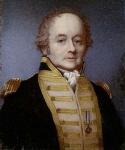Gunnery became a subject for practical mathematics in the 16th century. Printed books and new mathematical instruments dealt with the measurement of shot, the elevation of guns and mortars, and the calculation of the range of fire. Calipers and gauges were devised to measure diameters and indicate weights. Sights and levels enabled the gunner to set appropriate elevations, and there was an enormous range of forms and styles for such instruments, including exotic combinations which could never have served in warfare. More standard patterns were emerging by the 18th century when mathematical instrument makers had become regular suppliers to ordnance departments. The prediction of range in relation to the elevation of a gun was considered the pinnacle of artillery as a mathematical science, and its most difficult problem. From Galileo and Newton to the humble compilers of tables, mathematicians demonstrated the value of their art by studying the fleeting path of the shot through the air.
To make use of range tables that related a gun's elevation to its distance fired, gunners needed an estimate or, better still, a measurement of the distance to the target. Traditional surveying techniques measured distances by making physical connections between stations, using ropes, poles, or chains; this was not, of course, an option for the gunner, who could not approach his target. Sixteenth-century geometers keen to demonstrate the practical value of their discipline were, however, developing new methods for land surveying. They offered a variety of triangulation techniques for measuring distances without moving between sites, using new instruments to establish distant positions from a single measured baseline. Contemporary illustrations often show such triangulations in a military context - either for rangefinding by the gunner, or for distant measurement by the military surveyor.
Early mechanical gunnery aids.
The first recorded device to measure an elevation angle was Niccolò Tartaglia's invention of a gunners' quadrant circa 1545. This device had two arms at right angles connected by an arc marked with angular graduations. One arm was placed in the muzzle, and a plumb bob suspended against the arc showed the elevation angle. This led to many calculations relating elevation angle to range.
The problem was that these calculations assumed what today is called an "in vacuo" trajectory – they made no allowance for air resistance against the projectile. What was needed were range and accuracy trials to determine the actual relationship between range and elevation angle. The practical approach was conducted by William Eldred, Master Gunner at Dover Castle, in gunnery trials in 1613, 1617 and 1622. He used a wide variety of guns, including the culverin, demiculverin, falconet and Saker. From the results of these trials, he produced range tables for elevations up to 10 degrees for each type with a standard propelling charge weight.
A problem affecting gun laying, was the tapered external barrel shape. This affected elevation when the gun was aimed by sighting along the top of the barrel. In the early 17th century, 'dispart sights' compensated for this. This was a piece of metal placed on the muzzle to make the line of sight parallel to the axis of the bore. Another technique involved measuring the depth of the barrel through the touchhole and at the muzzle, the difference being the wedge size needed to compensate for the tapered barrel.
Ballistic pendulum, invented by Benjamin Robins to calculate muzzle velocity.
The ballistic pendulum was invented in 1742 by English mathematician Benjamin Robins, and published in his book New Principles of Gunnery, which revolutionized the science of ballistics, as it provided the first way to accurately measure the velocity of a bullet.
Robins used the ballistic pendulum to measure projectile velocity in two ways. The first was to attach the gun to the pendulum, and measure the recoil. Since the momentum of the gun is equal to the momentum of the ejecta, and since the projectile was (in those experiments) the large majority of the mass of the ejecta, the velocity of the bullet could be approximated. The second, and more accurate method, was to directly measure the bullet momentum by firing it into the pendulum. Robins experimented with musket balls of around one ounce in mass (30 g), while other contemporaries used his methods with cannon shot of one to three pounds (0.45 to 1.36 kg).
The first system to supplant ballistic pendulums with direct measures of projectile speed was invented in 1808, during the Napoleonic Wars and used a rapidly rotating shaft of known speed with two paper disks on it; the bullet was fired through the disks, parallel to the shaft, and the angular difference in the points of impact provided an elapsed time over the distance between the disks. A direct electromechanical clockwork measure appeared in 1840, with a spring-driven clock started and stopped by electromagnets, whose current was interrupted by the bullet passing through two meshes of fine wires, again providing the time to traverse the given distance.
Tangent sights were introduced in the 19th century. These provided the rear sight used with an 'acorn' or similar foresight at the muzzle. The tangent sight was mounted in a bracket beside or behind the breech, the eyepiece (a hole or notch) was atop a vertical bar that moved up and down in the bracket. The bar was marked in yards or degrees. This direct-fire sight was aimed at the target by moving the trail horizontally and elevating or depressing the barrel. By the late 19th century the simple open tangent sights were being replaced by optical telescopes on mounts with an elevation scale and screw aligned to the axis of the bore.







 Reply With Quote
Reply With Quote
Bookmarks